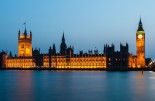BlueBay AM: Journey to lower inflation prints begins next week
BlueBay AM: Journey to lower inflation prints begins next week

Please see below for the latest weekly insight from Mark Dowding, CIO of BlueBay Asset Management. In this edition, he looks at the central bank policies in the US and UK, and the economic outlooks for Italy, China, and Iceland.
Global markets rallied in the immediate aftermath of this week’s Federal Reserve meeting, though relief that the FOMC had only hiked by 50bp proved relatively short-lived. Sentiment remains rather fragile, with investors generally inclined to reduce risk against an uncertain macro backdrop.
Incoming data across the global economy point towards a slowing of activity, as real incomes are squeezed by higher prices, financial conditions begin to tighten and China struggles to execute its zero-Covid policy. However, government bond yields remain much more sensitive to inflation than growth for the time being, on the mindset that central bankers will be forced to act to preserve price stability as an overarching imperative in the foreseeable future.
In this context, it seems that government yields are struggling to rally, or even stabilise until data supports the narrative that the worst of the inflation shock is now behind us. Consequently, this makes next week’s US CPI data very significant.
Prior to this, attention will also be on today’s earnings data within the monthly payrolls report. If inflation is to continue to overshoot for an extended period, then it is likely that this may be driven by wage inflation coming from a very tight labour market. The monthly number for US core CPI was 0.3% in March and a similar outturn for April will be helpful to underpin markets.
However, it seems too soon to expect any softening of rhetoric from Powell and colleagues, absent a much more pronounced and sudden tightening of financial conditions, should financial asset prices continue to fall sharply, accompanied by excessive strength in the US dollar.
In Europe, Italy’s Panetta sounded a note of caution with respect to ECB policy tightening against the deteriorating outlook. On a relative basis, we see European economies materially underperforming the US in the wake of the energy shock and the hit to confidence that has come with a war taking place on the continent’s doorstep.
Meanwhile, the difficult balancing act facing the ECB is compounded by building stress with respect to eurozone sovereign spreads, with 10-year BTPs now trading at 200bp versus Bunds – double the level seen just six months ago. Unequal transmission of monetary policy across the eurozone is thus tightening financial conditions for some of those countries where output gaps are the greatest, threatening renewed divergence in economic performance.
Should this manifest, it is understandable how this could play into the hands of populist political parties, with investors already starting to focus on elections in Italy in 2023. In this way, an imminent end to ECB asset purchases is showing that EU break-up risks have not gone away; they have simply been lying dormant.
We are reminded that a true, lasting monetary union will require much closer fiscal and political unity. However, further episodes of market stress may yet be required before policymakers take the tough decisions needed to move decisively in that direction.
In the UK, the Bank of England is standing apart from other central banks in revealing a desire to allow high inflation to essentially cure itself, thanks to the contraction of consumer demand that this is creating. However, this is not a tried-and-tested policy and not one that will be taught in many macroeconomic classes (is Andrew Bailey going to end up following the playbook of Erdogan, one wonders).
Consequently, it strikes us that the bank is taking a significant gamble and there must be a high probability that inflation expectations fully de-anchor, if they have not done so already. This may speak to a materially steeper yield curve and with a significant portion of UK debt issued on an inflation-linked basis, the increase in debt service costs that may be associated with an extended inflation overshoot could threaten to offset any attempts Rishi Sunak has made with respect to fiscal tightening.
Stagflation continues to be the most likely destination in the UK, in our eyes, and in such a landscape, we are inclined to think that all UK assets may struggle.
Elsewhere little has changed with respect to the ongoing conflict in Ukraine, where escalation risks remain a concern. In China, the spread of Covid in Beijing is the current worry, but we see no policy pivot towards approving and employing mRNA vaccines, or a push toward learning to live with Covid, as has been seen in the West. This suggests to us that we will see a stop/start pattern in Chinese activity, with risks skewed towards a contraction in output, as highlighted in recent PMI data.
In other EM countries, food inflation continues to be a source of growing concern in many economies, with those exposed to food and energy imports particularly vulnerable to a negative terms-of-trade shock, just as the dollar strengthens and many such economies are forced to import more hawkish US monetary policy.
Credit markets have remained under pressure as equities slide, volatility remains elevated and growth-slowdown worries weigh on markets. Supply has been muted, but where deals need to get done this is leading to material price concessions, which are then weighing on existing bonds in the secondary market.
In our view, quite a lot of bad news is now built into spreads. Consequently, we have been adding somewhat to credit, realising gains on CDS hedges, even as we extend interest-rate duration somewhat. From here, we are inclined to think a much more pronounced widening of spreads will probably mean that recession risks are more elevated. Should that be the case, long-dated government bonds should find some support.
Meanwhile, a research visit to Iceland this week provided a more cheerful narrative to focus on. Tourism is rebounding, while the country also enjoys ultra-cheap energy via renewable sources, which stands to benefit industry and attract investment. This also means that Iceland is more insulated from moves in global energy prices and, although the country imports oil, the prices of exports such as fish and aluminium have risen at least as quickly, insulating the nation from a terms-of-trade shock.
Elevated inflation today is largely due to domestic factors, with Iceland unusual in its inclusion of house prices in CPI data. The central bank raised rates by 100bp to 3.75% this week to combat this, and a further hike is expected in June, though anecdotally there are reasons to believe that inflation is currently being over-estimated. We see the fiscal position improving and project a return to current account surplus later this year. Consequently, we find value in long-dated bonds at >5% yields, with the currency similarly appearing attractive.
Over time, we see Iceland as a AAA country and, looking at saving trends and a number of different metrics, we offer the observation that the country may end up being recognised as ‘The Switzerland of the North’ in times to come.
Elsewhere in FX, the dollar has continued to firm and may have further to go in the wake of sustained relative growth outperformance. Earlier in 2022, it appeared briefly possible that the eurozone economy might outpace the US, but this now seems a distant memory. However, we think that the greenback may struggle to rally beyond parity versus the euro, whereas yen weakness may also start to attract attention having moved beyond 130.
Looking ahead
The outlook will be driven by the data. The Fed’s decision to front-load a monetary tightening cycle means that after several 50bp hikes, the path of policy is likely to become more unpredictable, with each meeting essentially a live meeting in which the Fed will be updating is assessment and adjusting policy accordingly.
This makes for quite an uncertain and potentially volatile investment environment; we continue to think that our strategy is best served waiting for opportunities to come our way, in the event that markets overshoot. In particular, should risk-off moves push spreads tighter, then there may be opportunities to buy.
However, what may be changing now is the assessment that it makes sense to own duration alongside spread – something we have been reflecting in multi-asset strategies, where we find ourselves moving away from a preference for bank loans and towards high yield bonds.
In market beta terms, 2022 has been pretty bloody so far and it seems likely that the sell-off should pause soon, as long as inflation data can stabilise. However, there remain parts of the market characterised by irrational exuberance and valuations that seem to have little basis in reality.
This week’s news that the Bored Ape community will be selling virtual plots of land in the metaverse, hoping to raise billions of dollars in the process, is perhaps the latest questionable example of this. But then the truth in investment is that any asset is always worth exactly what someone else is prepared to pay for it.
Moreover, spending excessive time dwelling in an alternative reality might seem a bit tragic to many of us, but at least it may not be as risky as looking at footage of tractors, as I’m sure that shamed Tory MP, Neil Parrish, will be the first to admit.









